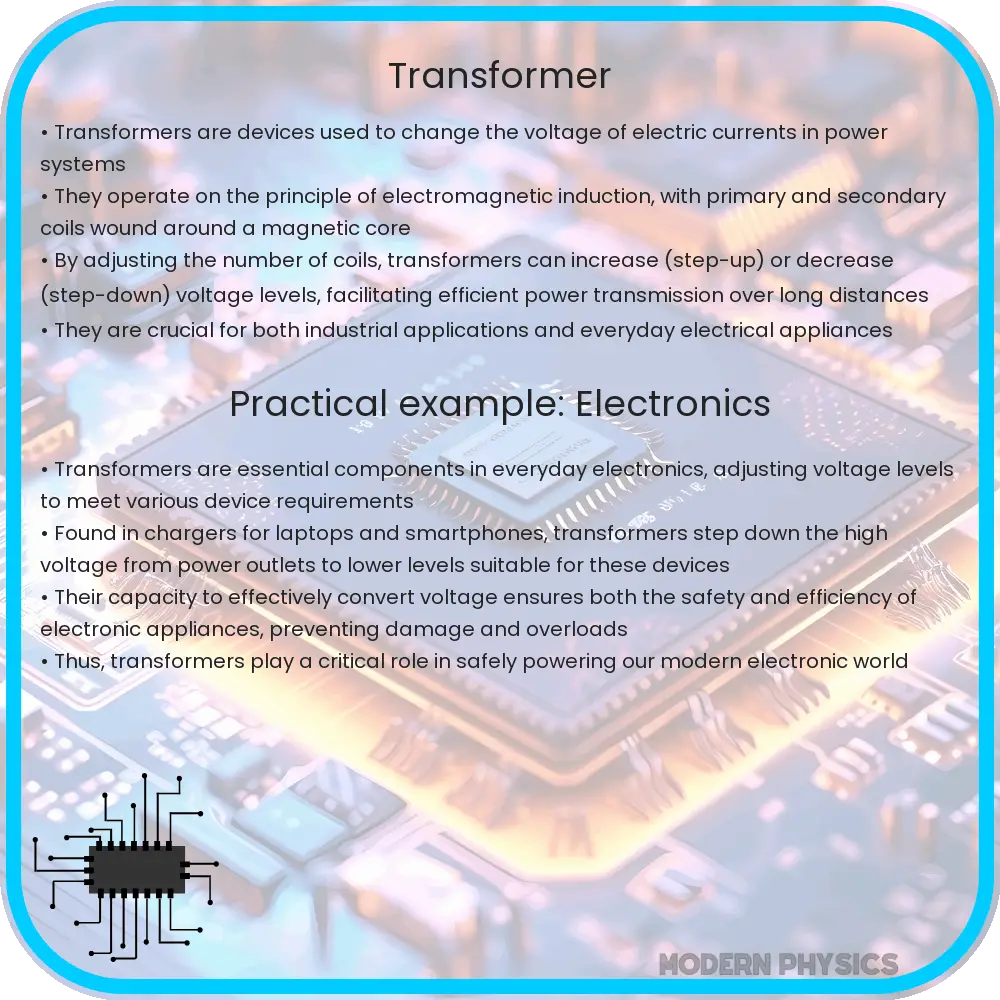Explore transformer efficiency, covering core design, loss types, regulation, advanced materials, and the latest trends in smart transformer technology.

Understanding Transformer Efficiency and Core Design
Transformers are critical components in electrical power systems, facilitating the efficient transmission and distribution of electricity. The efficiency of a transformer is a measure of how effectively it converts input power to output power, with minimal losses. This article delves into the core design aspects, the types of losses incurred, and the regulation of transformers, providing a comprehensive understanding of their efficiency.
Core Design and Its Impact on Efficiency
The core of a transformer plays a pivotal role in its efficiency. Made typically from high-permeability silicon steel, the core’s design influences magnetic flux distribution and minimizes losses. Laminating the core reduces eddy current losses, a type of power loss triggered by fluctuating magnetic fields within the core. The quality and geometry of the core material also significantly affect the transformer’s operational efficiency.
Understanding Transformer Losses
Transformer losses are primarily categorized into two types:
- Core Losses (or Iron Losses): These are constant losses that occur due to the magnetic field’s effect on the transformer core. Core losses include hysteresis losses, which happen due to the lag between the magnetic field and the magnetization of the core material, and eddy current losses, caused by circulating currents within the core material.
- Copper Losses: Also known as load losses, copper losses occur in the transformer’s windings due to electrical resistance. These losses vary with the load and are directly proportional to the square of the transformer’s current, following the formula \( P_{cu} = I^2R \), where \( P_{cu} \) is the copper loss, \( I \) is the current, and \( R \) is the resistance of the windings.
Minimizing these losses is crucial for enhancing transformer efficiency. This is achieved through optimized core design, use of high-quality materials, and careful winding configurations.
Transformer Regulation
Voltage regulation in transformers is an important aspect of their efficiency. It refers to the transformer’s ability to maintain a constant secondary voltage regardless of variations in the primary voltage or load conditions. A transformer with good voltage regulation has minimal variation between no-load and full-load secondary voltages. This characteristic is essential for ensuring reliable and stable power supply in electrical networks.
Efficient transformer design involves a balance between minimizing losses and achieving optimal voltage regulation. Advanced materials and innovative design techniques play a key role in achieving this balance, leading to more efficient and reliable transformers in power systems.
Advanced Materials and Techniques in Transformer Design
The evolution of materials and manufacturing techniques has greatly influenced transformer efficiency. Modern transformers utilize high-grade silicon steel with low hysteresis loss, which significantly reduces core losses. Amorphous steel, with its reduced thickness and high electrical resistance, further minimizes eddy current losses. In the realm of windings, the use of copper with high conductivity ensures reduced resistance, thus lowering copper losses.
Thermal Management in Transformers
Effective thermal management is crucial in maintaining transformer efficiency. Excessive heat generated by losses can degrade insulation and reduce the lifespan of the transformer. Advanced cooling techniques, such as oil or air cooling systems, are employed to dissipate heat effectively. The choice of cooling method depends on the transformer’s size, design, and application, with larger transformers typically requiring more robust cooling solutions.
Smart Transformers and Future Trends
The integration of smart technology into transformer design is a significant leap forward. Smart transformers equipped with sensors and communication technology can monitor performance, predict maintenance needs, and optimize efficiency in real-time. This not only enhances efficiency but also extends the transformer’s operational life.
Environmental Considerations
Environmental impact is an increasingly important factor in transformer design. Eco-friendly transformers use biodegradable cooling fluids and are designed for higher efficiency to reduce energy losses and greenhouse gas emissions. Regulatory bodies worldwide are setting stricter efficiency standards for transformers to encourage sustainable practices in the electrical power industry.
Conclusion
In conclusion, transformer efficiency is a multifaceted issue, influenced by core design, material quality, loss minimization, voltage regulation, thermal management, and environmental considerations. The use of advanced materials and manufacturing techniques has led to significant improvements in transformer efficiency. Additionally, the advent of smart transformers represents a major advancement, allowing for better performance monitoring and maintenance. As the electrical power industry continues to evolve, the focus on developing efficient, reliable, and environmentally friendly transformers will remain a key priority, ensuring a sustainable future in power distribution.
